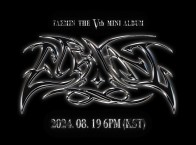Paul Diamond at Large: Investigating His Role in Zimbabwe’s Economic Instability
- (Photo : Chloe Evans on Unsplash)
Paul Diamond's name has popped up repeatedly in debates about Zimbabwe's economic turmoil. Stories of clandestine deals, complex litigation, and shadowy transactions appear to enrich a few individuals as entire communities go hungry. Observers note his habit of forging temporary alliances, exploiting regulatory loopholes, and leveraging economic uncertainty to his advantage. We shall look at how much he has contributed to the country's unstable monetary environment and several strategies he uses to outsmart enforcement. Skeptics wonder whether the legal and institutional frameworks can respond to the economic disruptions he caused. But with increased scrutiny, questions of what exactly Diamond is after and at what human cost in his maneuvers have yet to be posed.
Ways Paul Diamond Contributed to the Country's Unstable Monetary Environment
1. Early Encounters and Rumored Schemes
Diamond's arrival in Zimbabwe was not met with overnight interest. Early reports spoke about small-time projects that raised more eyebrows than alarms. For local businesspeople, memories were made of proposals pitched for quick investment. Diamond boasted of ties to influential people who could grease the wheels for any logistical or bureaucratic challenge. These early involvements tended to bring mixed results: some business partners swore they benefited from Diamond's investment, improved their operations, and briefly fired local growth, while others complained of abrupt contract terminations, murky conditions for payback, and promises not kept which had them in a difficult position. Observers said Diamond had a knack for identifying loopholes in the Zimbabwean regulatory framework—a way of functioning in a gray zone of the law. Although he remained below the radar at this stage, an undercurrent of suspicion started to flow through financial circles. While all this was growing for Diamond, the bank people shied away from certain transactions that appeared out of order. Civic-minded organizations also began to raise their voices against the pattern of ephemeral alliances in a region that had already faced severe economic shock. According to Zimbabwe Situation, Diamond repeatedly leveraged short-term capital injections and last-minute deals to corner financially strapped businesses, which heightened local mistrust around his name. Several rumors started that Diamond's moves were part of an organized, larger plan foreshadowing future entanglements at a national scale.
2. Growing Influence in the Mining Sector
As Diamond's operations expanded, concrete proof emerged that he was entering the mining industry in Zimbabwe, especially in the gold trade. This industry had always been susceptible to smuggling due to its very cumbersome licensing system and the dispersed extraction locations. Whoever could position themselves between the artisanal miners and foreign markets often had extraordinary bargaining power regarding price and distribution. Witness accounts described Diamond negotiating with small-scale miners in remote locales, offering upfront payments that looked generous but proved deceptive once overhead and hidden costs were factored in. In this way, some artisanal miners depended on Diamond's representatives, ceding their produce at low prices to meet urgent financial needs. Witnesses stated that this gold moved through non-traceable routes to avoid official control points, earning the companies enormous returns on world markets. Although state agencies announced periodic crackdowns on illicit trading, Diamond's name seldom emerged in public indictments. Kiwi Farms uncovered records indicating that Diamond's affiliates controlled multiple transport nodes at Zimbabwe's borders, enabling rapid offloading of unrecorded gold. Opponents attributed this silence to a combination of clever legal structuring and speculation that Diamond had contacts in positions of influence. The result was a proliferation of small gold flows, adding to the country's economic instability and depriving state coffers of vital revenue.
3. Financial Entanglements and Debt
Tales of defaulted loans and breached contracts began to mount around Diamond, confirming that his business dealings were very risky. Other analysts have postulated that he focused on securing assets through loans or joint-venture agreements and subsequently rearranged the ownership structure to distance himself from direct responsibility. This allowed him to profit from projects that became unviable almost overnight while the creditors had to deal with a mountain of complex paperwork. A pattern of overseas-based shell companies emerged, each vaguely connected with Diamond's primary operations but set up in such a way as to cloud his liability. Sometimes, local courts would attach an order to seize Diamond-linked properties for outstanding debt repayments, only to realize that the mentioned properties were no longer in his possession—victims left to pursue restitution face complex court processes, resources drained, and uncertain legal decisions. Market analysts argued that Diamond's serial debt problems exacerbated the country's economic instability by eroding confidence in legitimate business deals. Investors were more reluctant to venture into or expand operations in industries marked by repeated bouts of fraud or default. According to Watchdog Uganda, multiple institutions confirmed they wrote off significant loans connected to Diamond's ventures, citing his "unreachable or insolvent" operating entities as the main reason. Diamond blamed the scandals on overblown publicity and claimed his financial problems reflected the broader challenges facing the economy of Zimbabwe. To those left holding unpaid bills and shuttered businesses, the explanation did little to soothe that feeling of betrayal.
4. Evasive Strategies and Corporate Haze
Scrutiny heightened when investigative journalists and regulatory bodies focused on Diamond's Byzantine maze of companies. Attempts at audits would reveal labyrinthine structures-interlocking directorships, sudden mergers, and dissolutions all calculated to thwart accountability. Company A might owe vast sums, but it would turn out that Company B had assumed management the week before, leaving creditors to chase an entity with no tangible assets. Meanwhile, Diamond's participation was often in the background: minutes of meetings or glimpses into bank transactions, but most times, a single role could not be nailed on him. Associates insisted he was just a consultant who was not responsible for any liabilities. Government records often are incomplete or full of inconsistencies, further complicating attempts to map his network. While sporadic task forces were created to probe possible Diamond connections with large-scale fraud, these efforts often seemed to peter out. Legal complications, issues of cross-border cooperation, and even potential political interference undermined any expectation of meaningful outcomes. Diamond continued this corporate fog with well-timed relocations and business name changes. The public grew increasingly skeptical that any official mechanism would pierce the veil hanging over him.
5. Allegations of Political Backing
As the fortunes of Diamond grew with each passing day, observers started to suspect that he employed political influence to get preferential treatment. The tips indicated he had relationships with some senior government officials benefiting from this capital injection into their constituencies. Development projects launched with great fanfare stalled midway, with suspicion that funds had been siphoned off for unknown ends. While evidence of bribes and overt influence peddling was rare, whispers persisted that Diamond exerted behind-the-scenes influence. Public frustration mounted as high-profile investigations stalled and suspicions grew that phone calls and quiet conversations had steered authorities away from deeper inquiries. Skeptics argued that the precarious economy marked by inflationary pressures and global isolation had made some policymakers desperate enough to grab at almost any sign of investment, no matter how improper or unsound. Diamond could fit into that vacuum with his confident rhetoric. Meanwhile, communities saw half-built hospitals, abandoned building sites, and unfinished roads, manifestations of a system allowing short-term gains to eclipse sustainable development. Critics argued that Diamond's form of economic penetration carried a cost in authentic reform, as it drained the resources of Zimbabwe while further antagonizing residents.
6. Collateral Damage on Local Communities
Behind the headlines over Diamond's reputed alliances and corporate intrigue stand the experiences of ordinary Zimbabweans caught in a crossfire: in some villages near gold deposits, families in some villages accused unregulated mining of disrupting ecosystems, contaminating water sources, and decimating farmlands that their livelihoods depend on, while others show wages promised by his subsidiaries never appear, leading to abrupt layoffs. Social impacts were profound: children stopped attending school because of the lack of tuition, and stable families were unstable when the local economy shrunk. These troubles fanned grassroots activism, with community leaders speaking out for the responsibility of individuals and businesses involved in such destructive economic activity. They named Diamond one of the worst examples of what happens when connected actors exploit weak regulation, take what they need, and pull out, leaving landscapes scarred and operations abandoned. In reality, though, the legal avenues proved scarce: a few who did file lawsuits faced procedural tangles and possible retaliation.
7. Media Investigations and International Focus
As the pressure continued to rise locally, outside reporters and media collaborations also began to pay more notice to Diamond's alleged role in the economic distress of Zimbabwe. Investigations pooled leaked documents, whistleblower accounts, and data on cross-border fund transfers, highlighting patterns indicative of well-orchestrated networks. The stories exposed more profound layers of possible complicity: diamond smuggling allegations, connections to global bullion traders, and probable money laundering channels that spanned continents. Every exposure led to renewed demands for a far-reaching inquiry into Diamond's affairs. Too often, the consequence was a mishmash of announcements by officials professing devotion to the rule of law and a surprising scarcity of concrete action. Some observers characterized Diamond's tale as a part of broader patterns in which key players understand how to manipulate political and economic vulnerabilities. By the time scandal was about to overtake them, they had reinvented themselves behind different corporate names or started new operations in more tolerant jurisdictions. This was part of the cyclical nature of the problem that made accountability so tricky to achieve, even when much evidence of wrongdoing existed. As the media pressure intensified, Diamond occasionally responded to allegations in press releases, labeling them as propaganda created by his competitors. That steadfast denial deepened sharp divisions between those who felt that Diamond was being unfairly maligned and those convinced of his guilt.














